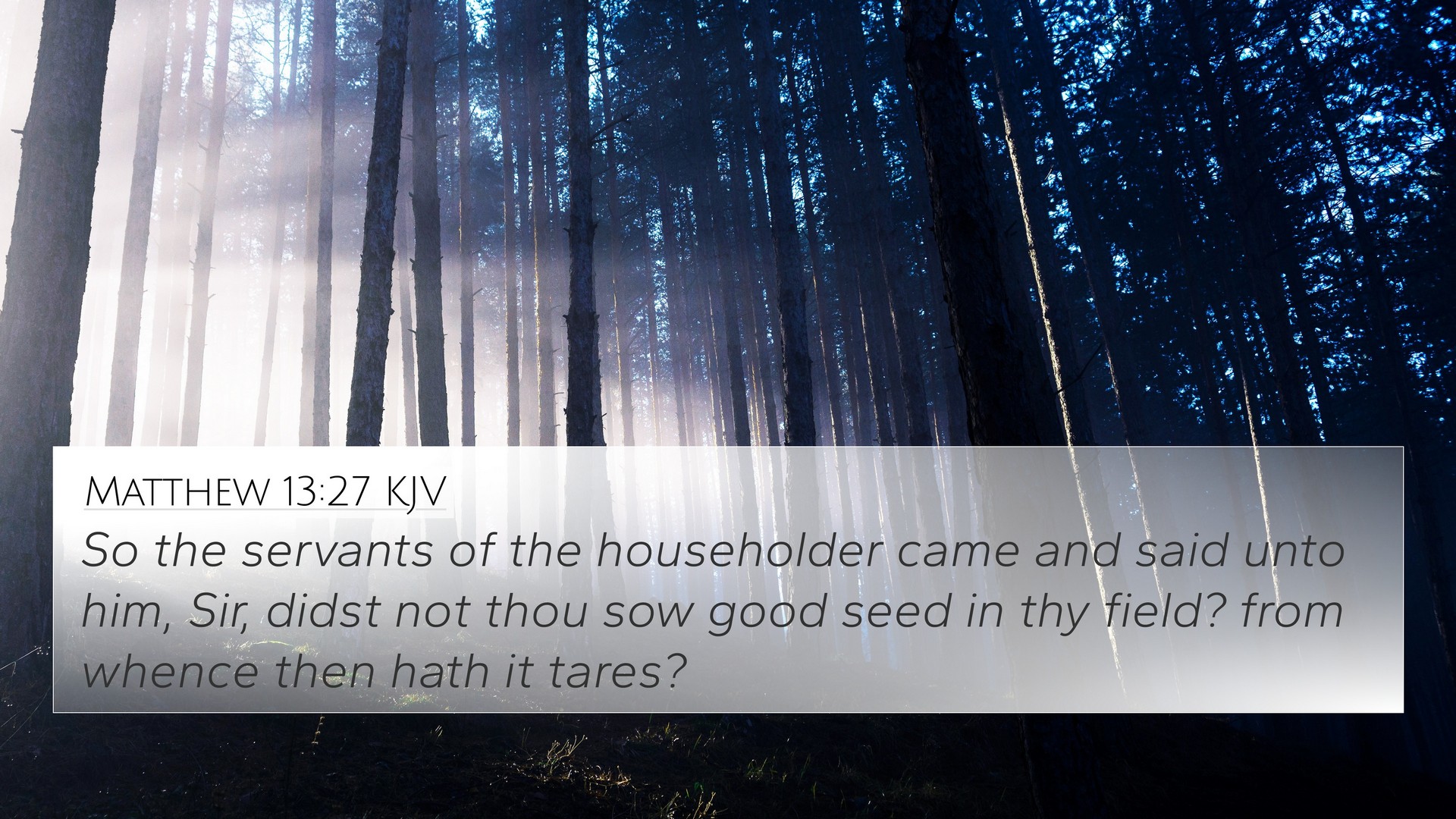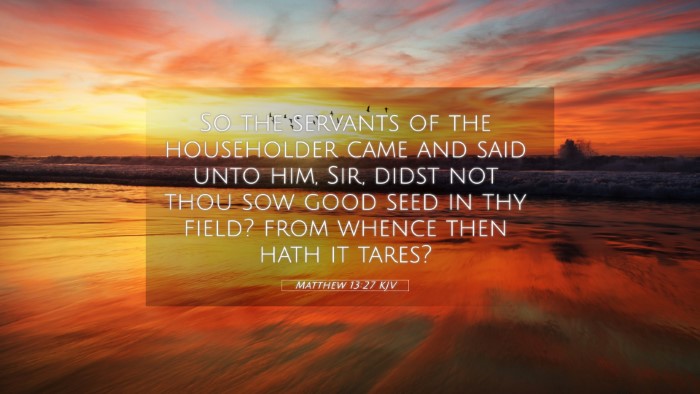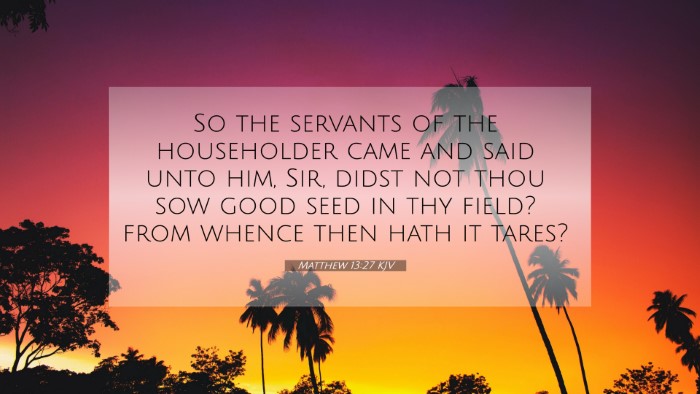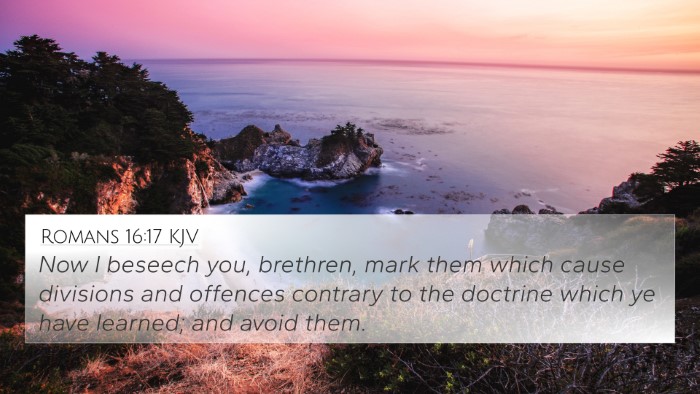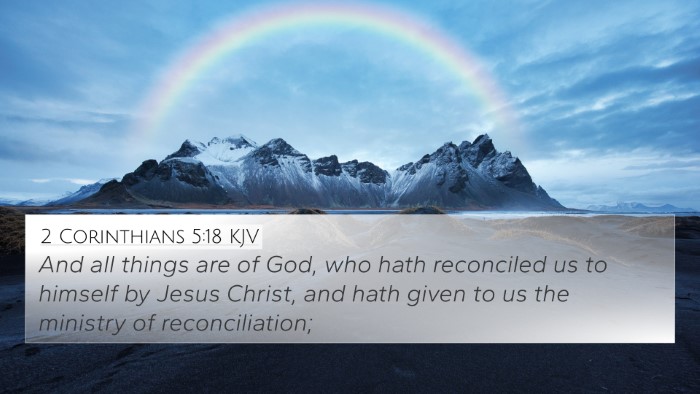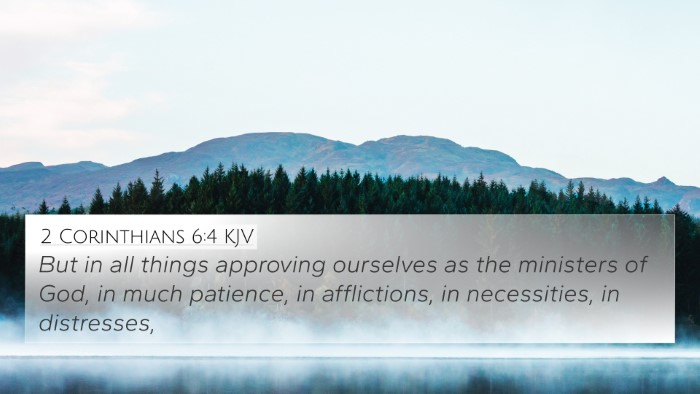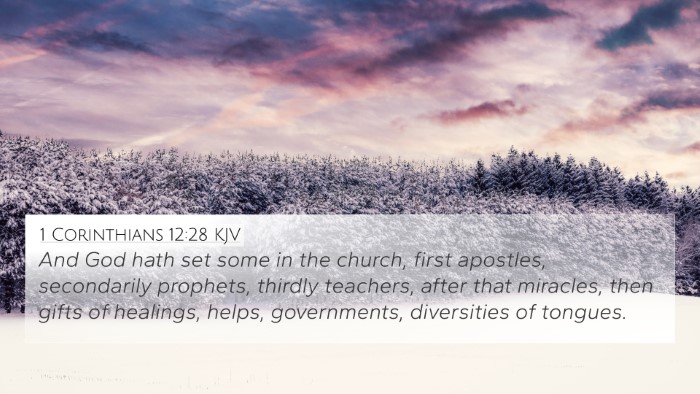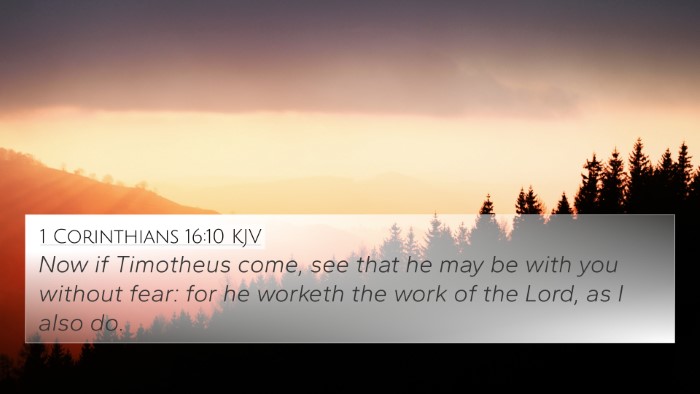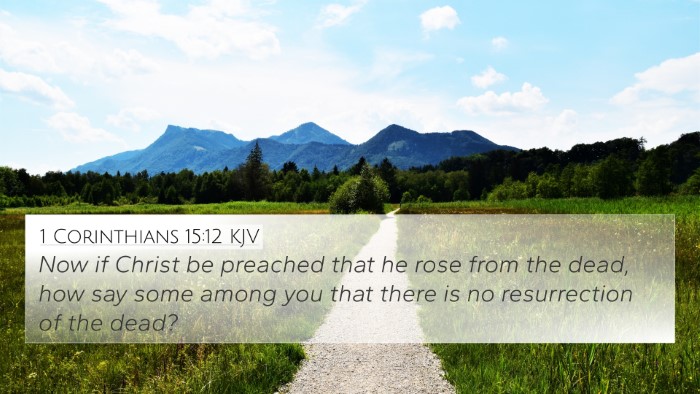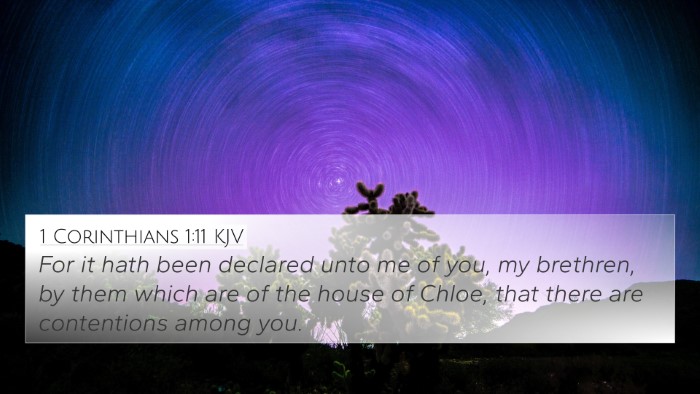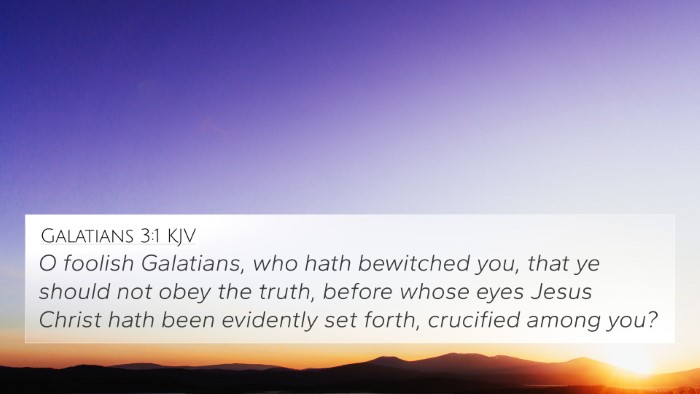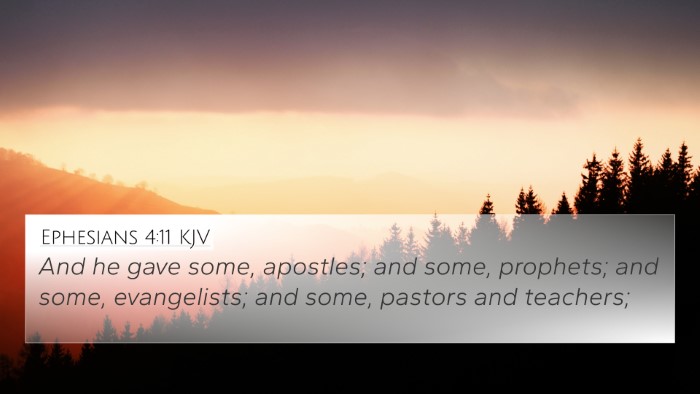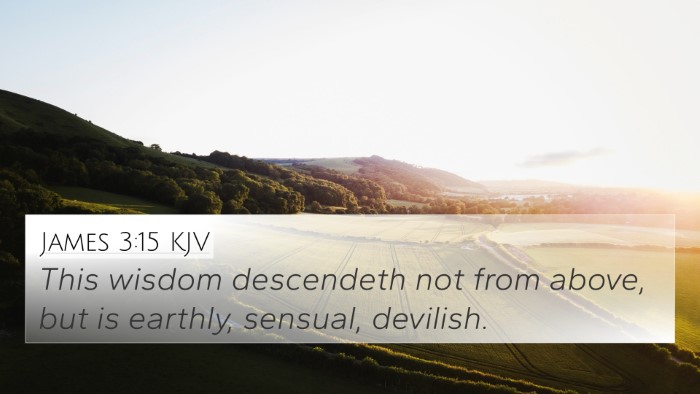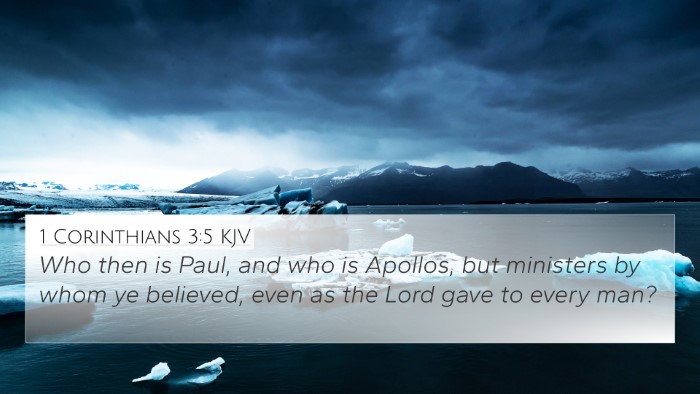Understanding Matthew 13:27
Matthew 13:27 states: "So the servants of the householder came and said unto him, Sir, did you not sow good seed in your field? From where then has it tares?"
This verse draws attention to the theme of spiritual discernment and the presence of evil amidst good. The inquiry of the servants raises critical questions about the nature of sowing and reaping in the context of the Kingdom of Heaven.
Summary of Meaning and Interpretation
In examining this verse, we can glean insights from multiple public domain commentaries, echoing similar themes about good and evil coexisting in the world.
The Parable Context
Matthew Henry emphasizes the purpose of the parable as a teaching moment on the nature of God's kingdom. The good seed symbolizes the true believers, while the tares represent the false believers or evildoers who infiltrate the community of faith.
Albert Barnes notes that this parable serves as an allegory of the Church throughout ages. The question posed reflects human confusion about the existence of evil in a realm initiated by God and signifies the challenge faced by believers in recognizing and addressing the presence of iniquity.
Adam Clarke expounds further on the servants’ bewilderment. He points out that the query they pose reveals a lack of understanding about the workings of the enemy. This reflects the manner in which believers often question God's sovereignty when faced with the reality of evil.
Thematic Connections
This verse connects deeply with several significant Biblical themes, including:
- The coexistence of good and evil: Biblical texts like Matthew 13:24-30 further elaborate on this theme through the parable of the wheat and tares.
- Divine justice and judgment: The judgement of the tares at harvest time represents the final reckoning, paralleling Revelation 20:12 which speaks of the dead being judged.
- The role of the enemy: This is highlighted in John 10:10, where the thief represents forces that seek to harm the flock of God.
- The importance of discernment: 1 John 4:1 advises believers to test spirits, reinforcing the need for discernment amidst confusion.
- God's sovereignty: Despite the presence of evil, Romans 8:28 reminds us that God works all things for good for those who love Him.
Cross-References and Connections
To enrich your understanding of Matthew 13:27, here are some valuable cross-references:
- Matthew 13:24-30 - The Parable of the Wheat and Tares
- Galatians 6:7-8 - A man's sowing shall determine his reaping
- James 3:10-12 - The implications of good and evil speech
- John 15:1-2 - Christ as the vine and the necessity for pruning
- 2 Corinthians 11:13-15 - Warning about deceitful workers
- Philippians 3:18-19 - The enemies of the Cross of Christ
- Matthew 7:21-23 - The reality of false believers
Application and Reflection
As we contemplate Matthew 13:27, we are reminded that the presence of tares among the wheat serves as a warning to the Church. It encourages believers to remain steadfast in faith and diligent in their walk with Christ while understanding that trials and confusion may arise from the enemy's work. The need for spiritual tools, like a Bible concordance or a cross-reference guide, can greatly assist in navigating these complexities.
Investing time in comparative Bible verse analysis will allow deeper revelation and connectivity between the Scriptures. Utilizing methods of cross-referencing and thematic connections enhances our interpretation of passages and fosters a richer understanding of God's Word.
Conclusion
In conclusion, Matthew 13:27 is a poignant reminder of the ongoing battle between good and evil within the framework of God's plan. Engaging with cross-references not only provides context but also equips believers to face the challenges that arise from this dual presence in the world.
Further Study
To deepen your study, consider exploring resources that detail how to use Bible cross-references in your personal study. Engaging in cross-referencing Bible study methods can help you draw connections between seemingly disparate verses and uncovering profound insights together.
